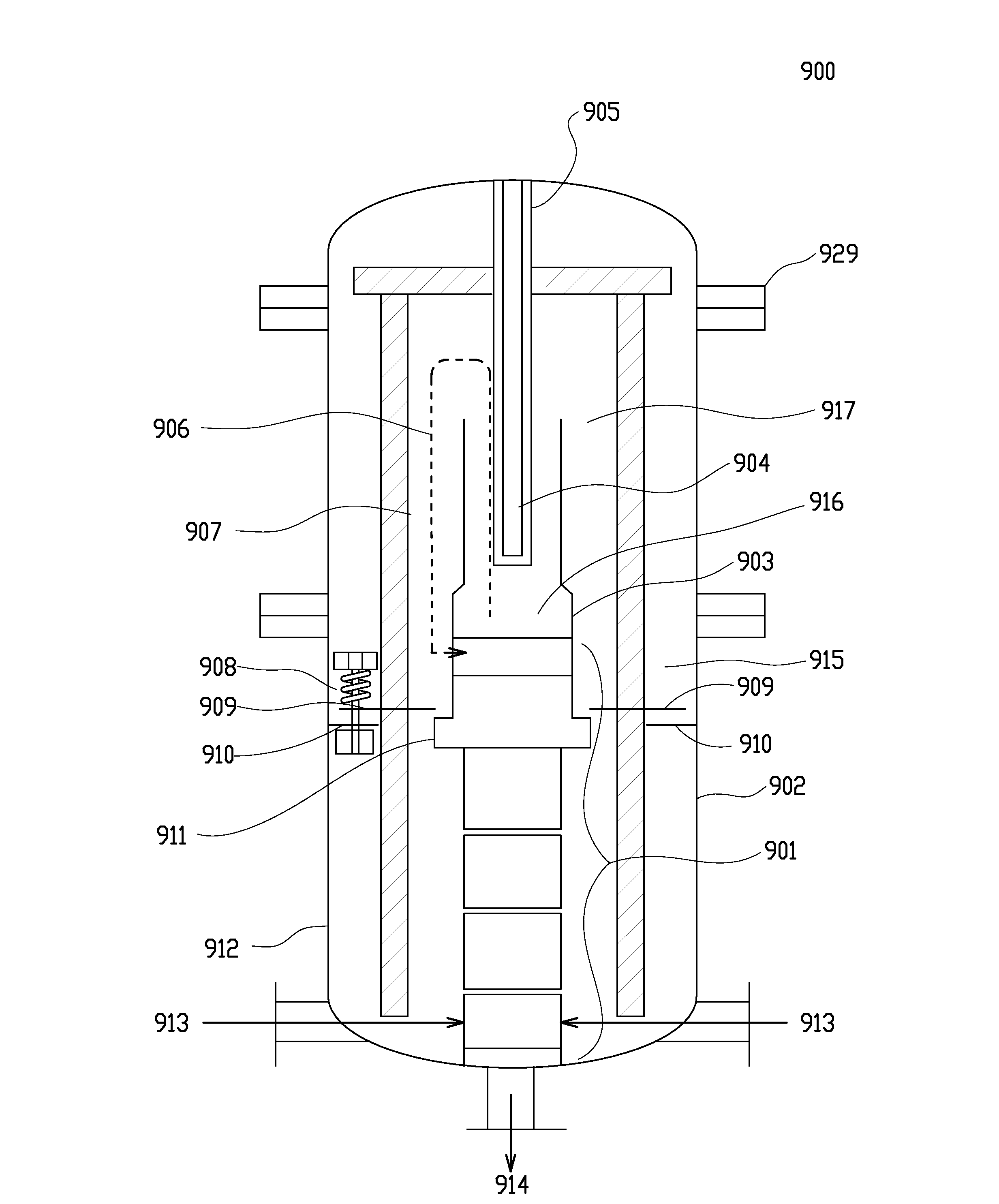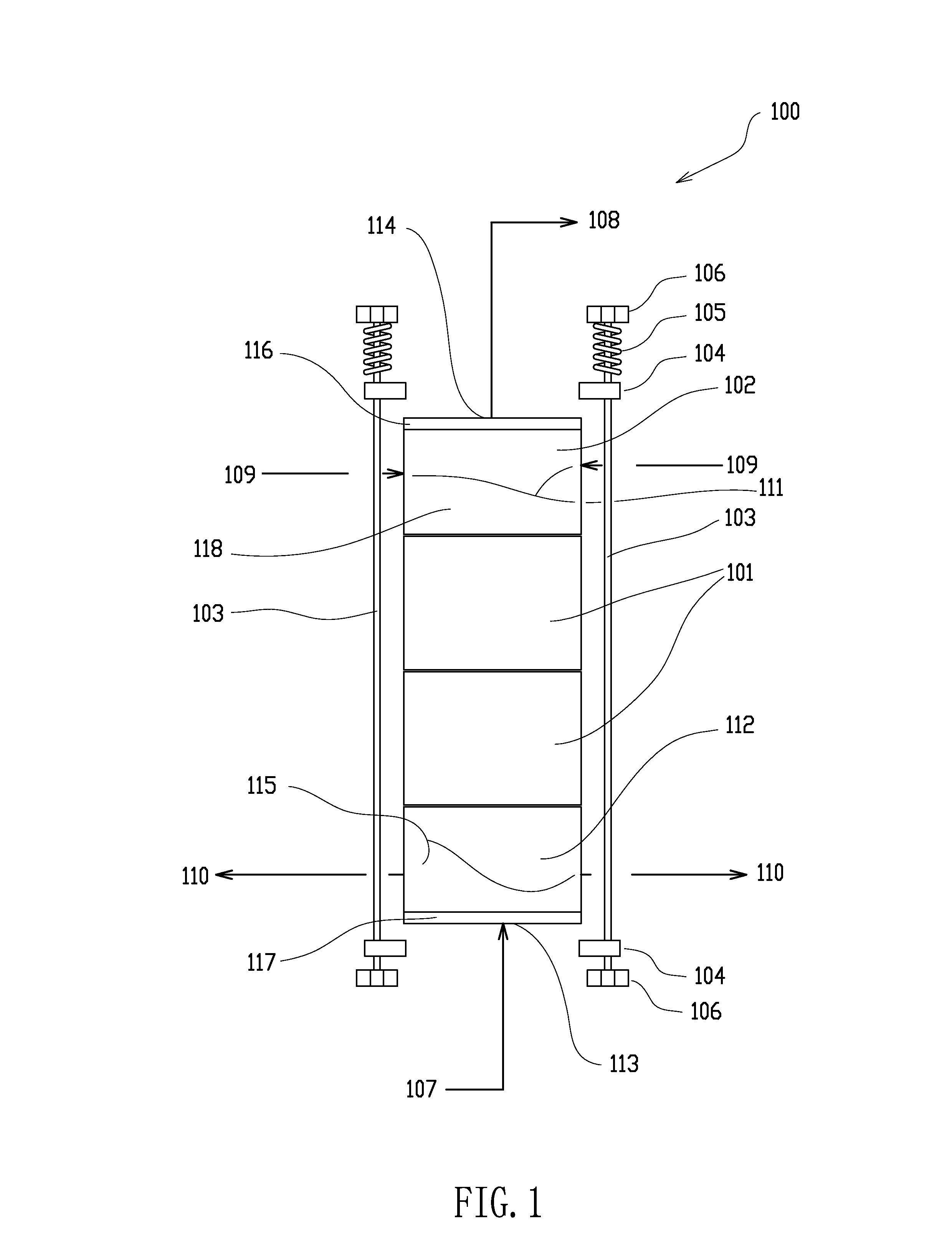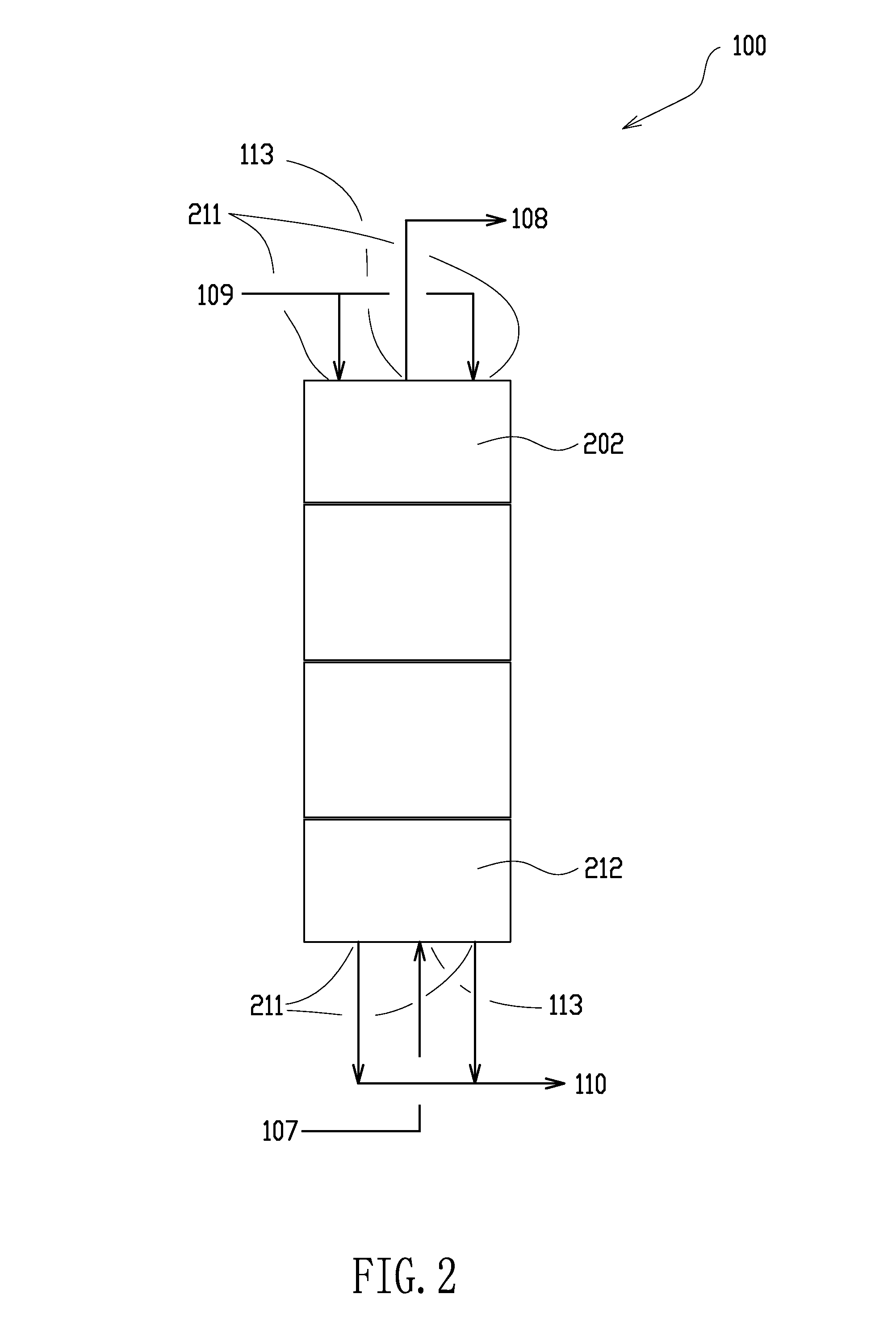Monolithic Heat Exchanger and Apparatus and Methods for Hydrogenation of a Halosilane
a heat exchanger and monolithic technology, applied in the direction of heat exchange apparatus safety devices, indirect heat exchangers, lighting and heating apparatus, etc., can solve the problems of large base plate, large loss of primary raw materials silicon and chlorine, and large loss of primary raw materials, etc., to reduce the temperature of component parts and increase the area available for convective heat transfer
- Summary
- Abstract
- Description
- Claims
- Application Information
AI Technical Summary
Benefits of technology
Problems solved by technology
Method used
Image
Examples
constructive examples
[0107]Standard engineering techniques known to those skilled in the art were used to compare the thermal and hydraulic performance of the counter-current heat exchanger of this invention to a cylindrical cross flow heat exchanger useful in an STC hydrogenation reactor. Heat transfer coefficients can be estimated as flow through a tube using equations such as the Seider Tate equation. Hydraulic performance can be estimated as presented by the Serghides's solution and the Darcy equation. Heat transfer through the solid portion of the heat exchanger is estimated as concentric circular rings using techniques known to those skilled in the art. Taking a cross flow heat exchanger as that found in FIG. 2 of the Fahrenbruck U.S. Patent Application Publication US2012 / 0328503 A1, which is believed representative of the performance achievable in a cross flow heat exchanger, was used for comparison. It assumes the heat exchanger block referenced in the constructive example is 610 mm diameter by ...
PUM
 Login to View More
Login to View More Abstract
Description
Claims
Application Information
 Login to View More
Login to View More - R&D
- Intellectual Property
- Life Sciences
- Materials
- Tech Scout
- Unparalleled Data Quality
- Higher Quality Content
- 60% Fewer Hallucinations
Browse by: Latest US Patents, China's latest patents, Technical Efficacy Thesaurus, Application Domain, Technology Topic, Popular Technical Reports.
© 2025 PatSnap. All rights reserved.Legal|Privacy policy|Modern Slavery Act Transparency Statement|Sitemap|About US| Contact US: help@patsnap.com



